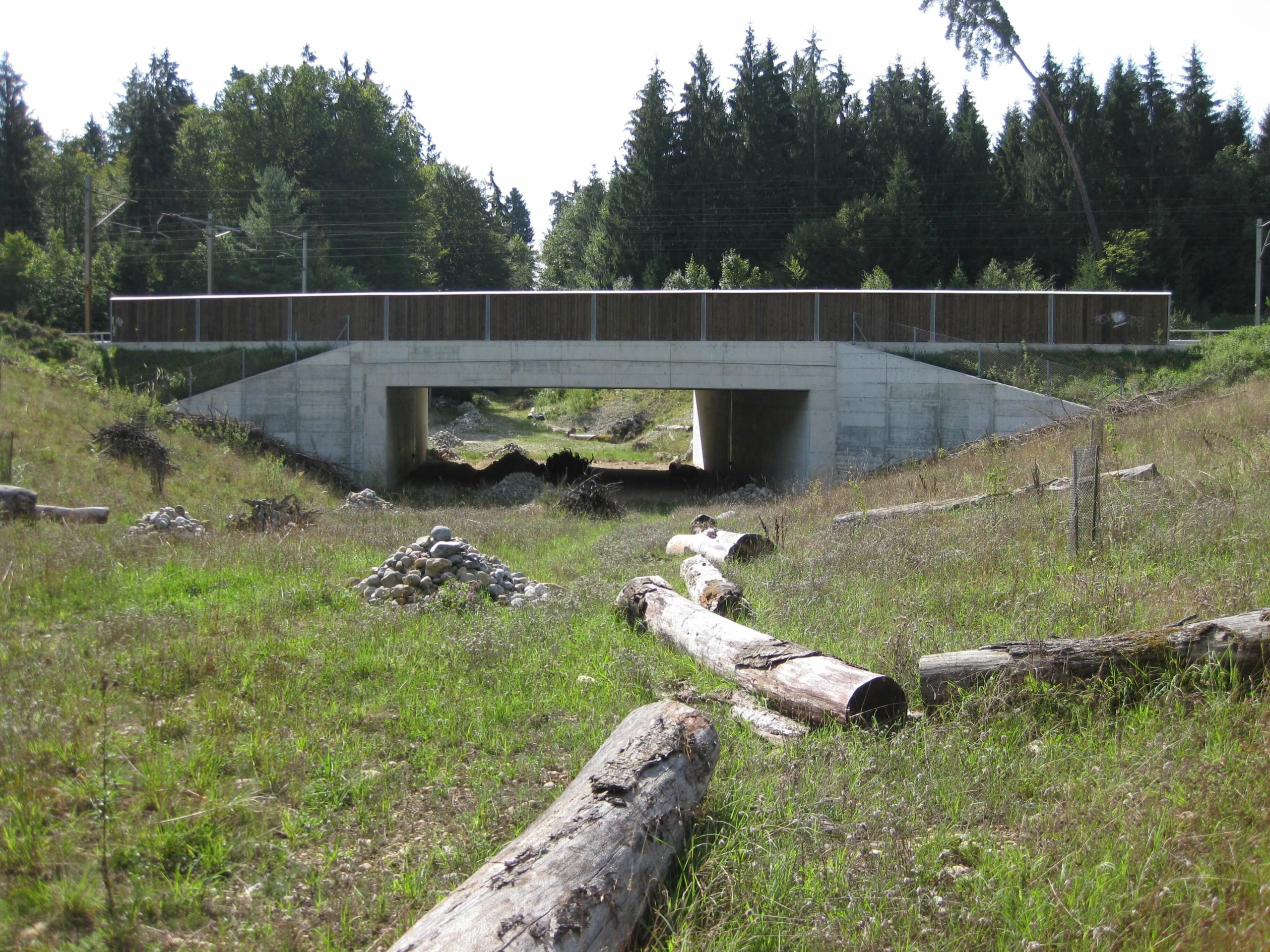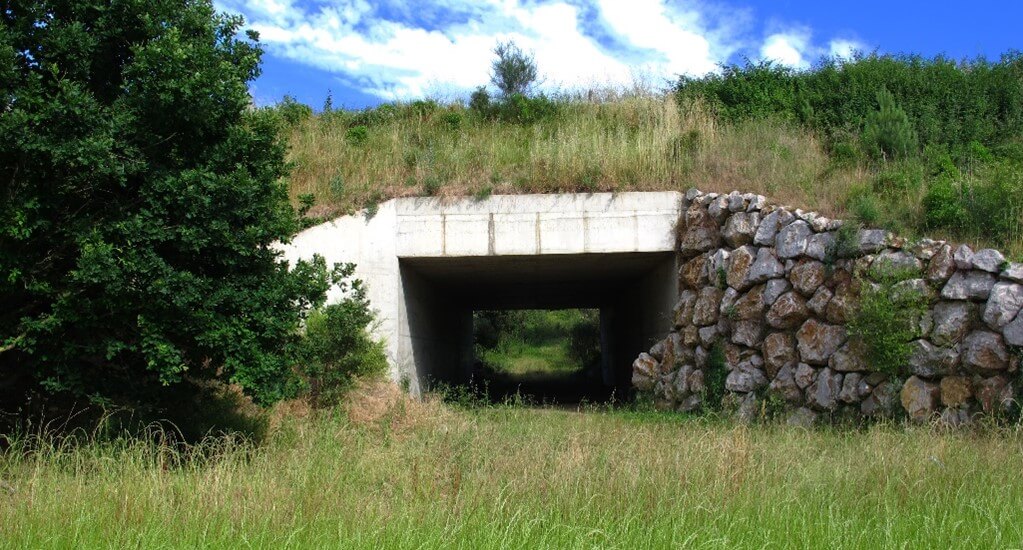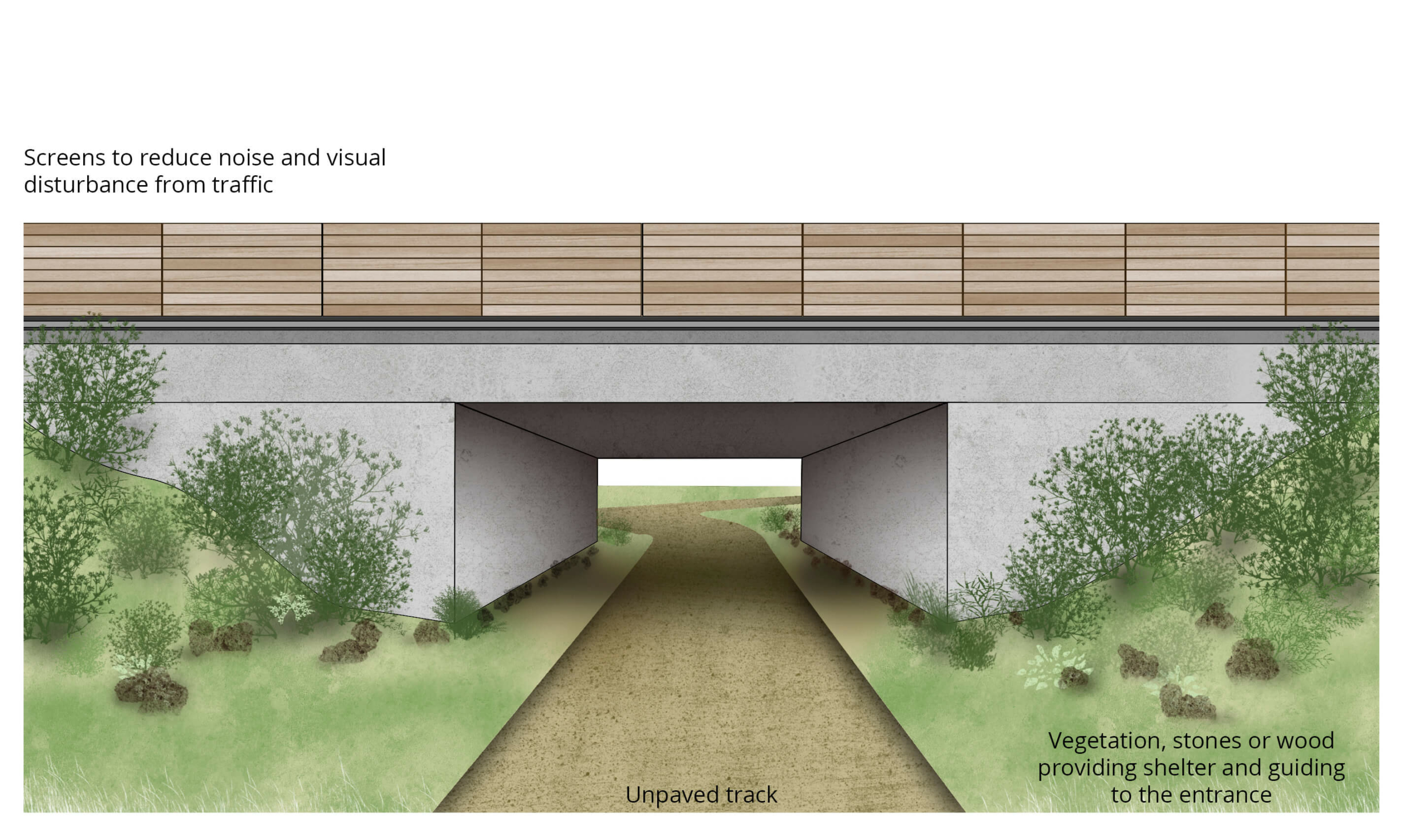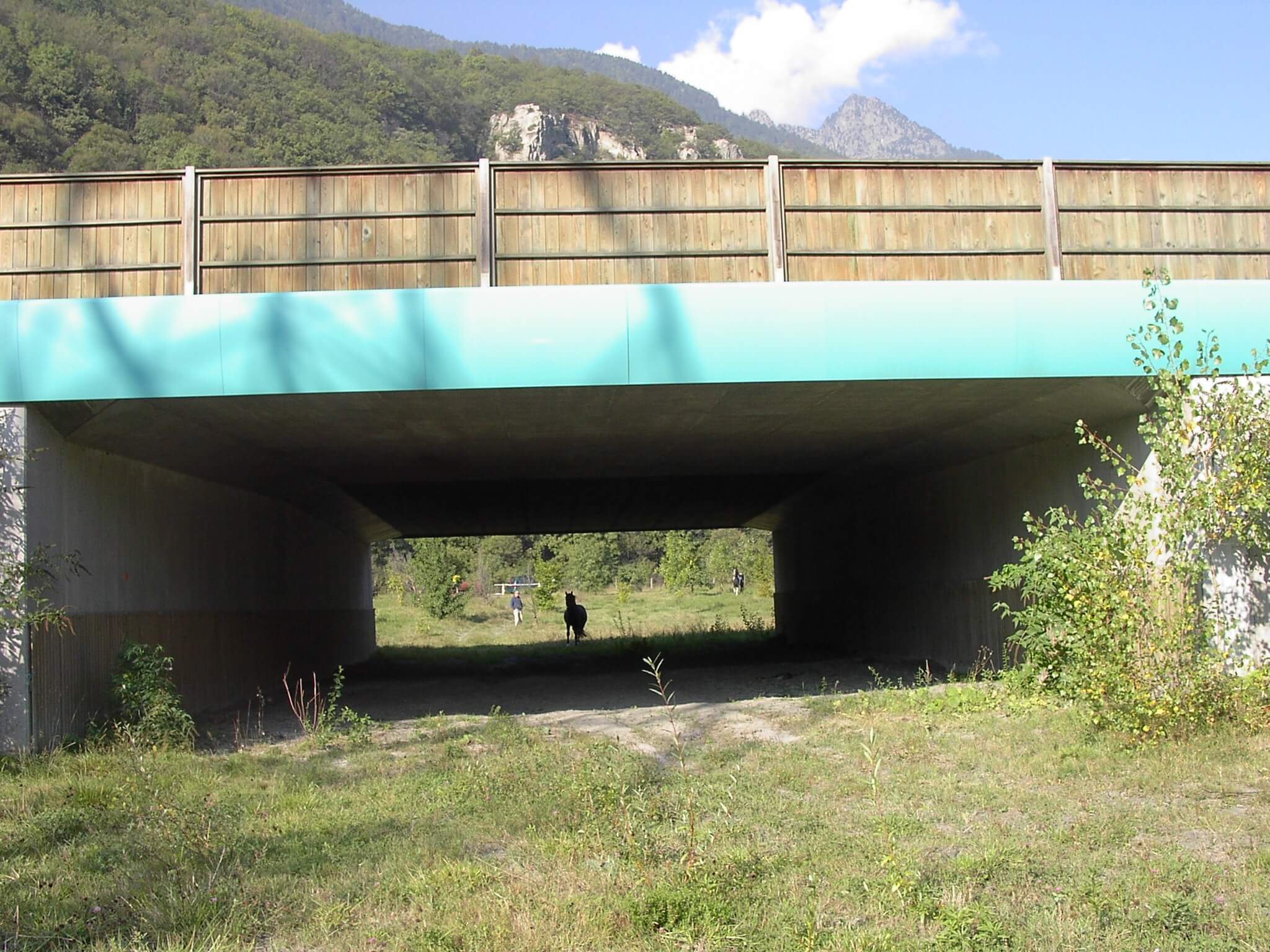General description and targets
Wildlife underpasses are structures specifically built to provide a safe crossing point for a wide range of species and are suitable particularly for hilly areas or where the infrastructure is situated on an embankment. Common target species are usually ungulates (such as deer and wild boar), and large carnivores (brown bear, lynx and wolf). However, they can be used by a wide range of species such as small mammals, bats, reptiles, walking birds (ducks or partridges) and also for amphibians if fencing and conditions are suitable. Underpasses are less appropriate for flying birds and many invertebrate species which require light to guide their movements. Due to limited dimensions, wildlife underpasses may often lack sufficient light and water to support vegetation, making them less suitable for connecting habitats than wildlife overpasses.
Location
- Wildlife underpasses should be located where the infrastructure crosses ecological corridors, routes used by target species or where local topography funnels animal movements towards the passage. The identification of such paths is undertaken within environmental impact assessment procedures (see Chapter 2 – Policy, strategy and planning).
- If the structure cannot be located in the optimal place, surrounding land should be restored to connect the underpass entrance with the ecological corridors and provide a better integration into the landscape.
- Areas where human activity is causing disturbance should be avoided.
Dimensions
The dimensions of an underpass are defined as height, width and length. The openness (Openness Index, OI = width*height/length) is also a useful parameter to provide (Figure 5.5.3) but it should never be used as the sole criteria to define suitability of the underpass for a target species. The recommended minimum dimensions for wildlife underpasses in European standards ranges from 15 to 30 m width; 3 to 4 m height; 1.5 Openness Index (Table 5.3). Other requirements for ungulates and large carnivores are provided in Table 5.3.
Experience suggests that mammals may learn to use an underpass situated in their home ranges even if its dimensions (particularly height) are less than recommended. However, inexperienced animals, in particular young individuals in their dispersal phase or migratory individuals, may be more reluctant to do the same. There has been little research in this area, as monitoring programmes usually focus on the use by animals resident in the vicinity of an underpass. Constructing a correctly assessed underpass according to recommended dimensions may eliminate the risk that the structure is used by only a low number of resident individuals.
Vegetation and soil cover
The ground inside an underpass should be natural, i.e. covered with soil.
Due to limited light and water, vegetation will may grow only sparsely inside an underpass, but should be supported where possible.
Vegetation at the underpass entrances should be attractive to the target species. Ungulates could be attracted to the passage by planting attractive palatable plants at both sides of the entrances. Bushes around the entrance may be planted both to guide animals towards the underpass and to provide screening against light and noise disturbance from the road or railway line. Nevertheless vegetation should not obstruct the entrance, and must allow a good view through the passage (Figure 5.5.32).
Fences and screens
Stretches of road or railway where wildlife underpasses are built should be fenced off to lead the animals towards the structure and prevent attempts to cross the carriageway.
Screens running across the top of the underpass reduce disturbance from traffic (Figure 5.5.31).
Points for special attention
- Underpasses for exclusive use by wildlife are recommended as a general rule to maximise fauna use and particularly improve crossing by large carnivores and ungulates.
- A watercourse leading through the underpass may make it more acceptable to wildlife.
- Hunting in the vicinity of fauna passages needs to be restricted to an area designated according to the local situation and the type of passage.
- Underpasses must not be used for storage or parking.
- Access to the underpass should be levelled out and free of obstacles that hinder small animals.
- Design and materials must ensure that standing water does not accumulate in the underpass.
- Places to shelter inside the underpass encourage its use by smaller animals (e.g. logs, rocks, piles of dead wood) (Figure 5.5.33).
- In order to limit the length of the crossing and to open up access to the entrance of the passage as much as possible, walls of the structure and the sides of embankments may be constructed with an opening angle> 45° (Figure 5.5.34).
- The joint use of an underpass by animals and vehicles or walkers is possible where traffic is very light. Points for special attention for multiuse underpasses are listed in Section 5.5.8 – Multiuse underpasses.



